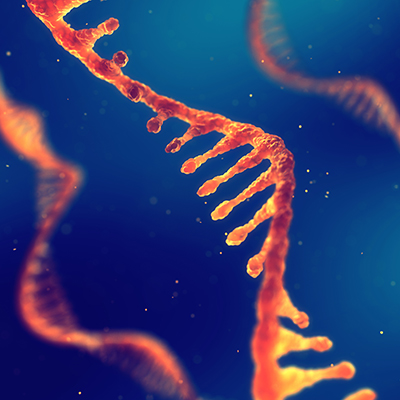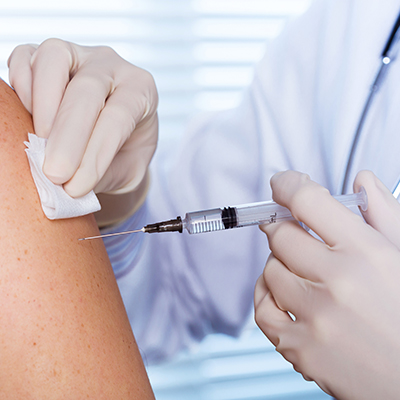April 2, 2021 -- A novel second-generation chimeric antigen receptor (CAR)-based approach targeting HIV infection using the genetic modification of hematopoietic stem cells (HSCs) shows promise in preclinical models. The details of the study were published in PLOS Pathogens on April 1.
HIV is a deadly retrovirus that can lead to AIDS, a disease characterized by progressive failure of the immune system. Latent CD4+ T-cell reservoirs infected with HIV-1 can revert to a resting memory state, a condition that can persist indefinitely after initial viral suppression. These reservoirs are a major barrier to finding a cure for HIV-1 infection. If at any point the latent cells become reactivated, the cell can begin to produce HIV again.
CARs recognize target cells through direct binding to specific cell surface antigens and redirect both CD4+ and CD8+ T cells. The first CAR clinical trials were conducted for HIV-1 infection, where CARs were composed of the CD4 extracellular domain linked to the intracellular CD3-zeta chain signaling domain (CD4CAR). These CARs were designed to bind to the HIV-I envelope for targeting/killing of HIV-1 infected cells by redirected peripheral T cells. However, in initial clinical trials the cells had limited antiviral efficacy in vivo.
The limited efficacy was attributed to suboptimal T-cell processing/handling, low levels of HIV-1 antigen during antiretroviral therapy treatment, and CAR T-cell dependence on antigenic stimulation for proliferation/maturation due to latency, as well as potential enhancement of cellular HIV-1 infection by the CD4 portion of the CAR.
In the current study, a team at the University of California, Los Angeles (UCLA) built on previous work demonstrating the successful long-term engraftment (where transplanted stem cells begin to make new cells) and production of anti-HIV CAR T cells in modified HSCs in vivo.
However, newly developed peripheral T cell CAR gene therapy to target HIV-1 and various cancers has been limited by inadequate function, persistence, and trafficking of transduced T cells. The use of HSC gene therapy can offer lifelong generation of physiologically functional CAR T cells in vivo. HSC-based gene therapy allows for transduced cells to undergo normal immune developmental mechanisms.
Designing an improved CAR-based gene therapy
As mentioned previously, one undesirable feature of the first-generation CD4CAR used in clinical trials is that the receptor itself can mediate HIV-1 infection. To address this concern, the UCLA team generated a truncated CD4 CAR molecule by deleting the third and fourth domain of CD4 so that it does not cross-react with interleukin 16 (IL-16) and has decreased interaction with human leukocyte antigen (HLA) class II endogenous T-cell receptors. The truncated version contains only the first and second domains of CD4 that will allow for HIV-1 envelope recognition. This molecule was called D1D2CAR.
D1D2CAR T cells were transduced into lentiviral vectors, to compare their function with CD4CAR T cells. The researchers found that both CARs exhibit similar expression levels of interferon gamma and tumor necrosis factor alpha production in response to HIV-1 infected target cells. They also demonstrated that D1D2CAR T cells do not affect T-cell differentiation and T-cell receptor expression, leading to normal CAR T-cell development. They attributed this to the deletion of the third and fourth domains of the CD4 molecule.
Next, the researchers transplanted HIV-infected transgenic mice with unmodified HSCs or HSCs modified with CD4CAR or D1D2CAR. They found that CD4CAR T cells produced nonspecific signaling via IL-16 mediated CD4 dimerization. In contrast, D1D2CAR T cells did not mediate HIV-1 infection or IL-16 signaling in vivo, demonstrating the safety and efficacy of the treatment.
The scientists suggested that the addition of costimulatory domains in tandem with CD3-zeta, such as the signaling domains of CD137 (4-1BB), can enhance in vivo CAR T-cell function and persistence. However, they did not know if the addition of 4-1BB would improve HSC-based CAR therapy. In vivo, the researchers demonstrated that mice that received CD4CAR-41BB and D1D2CAR-41BB HSC transplants demonstrated significantly lower viral loads than mice that received CD4CAR and D1D2CAR HSC transplants.
Previous research has established that in peripheral CAR T cell-based therapies, costimulatory signals are required to achieve persistence and robust anti-tumor/anti-HIV-1 activity. The team's results validated this statement. They found that CD4CAR-41BB and D1D2CAR 4-1BB had increased T-cell effector memory, which is a desirable aspect of immune response leading to superior persistence and proliferation to support sustained response for long periods and ability to maintain immune memory.
Cumulatively, the addition of the 4-1BB costimulatory domain resulted in faster viral suppression in CD4CAR 4-1BB and D1D2CAR 4-1BB mice as compared to CD4CAR and D1D2CAR mice. The modified HSC-derived CAR T cells also promoted better CAR T-cell persistence during antiretroviral therapy treatment, particularly for D1D2CAR 4-1BB T cells. Again, the authors suggested that improved immune memory could potentially be due to reduction in nonspecific signaling via HLA class II and IL-16.
The findings provide critical insights into the types of CAR molecules and approaches that are suitable for next-generation CAR therapies using stem cells and that allow for optimal function and persistence of CAR T cells after development.
Do you have a unique perspective on your research related to infectious disease or virology? Contact the editor today to learn more.
Copyright © 2021 scienceboard.net








